Human Relationships & The Microcosmic Connection To Atomic Bonding
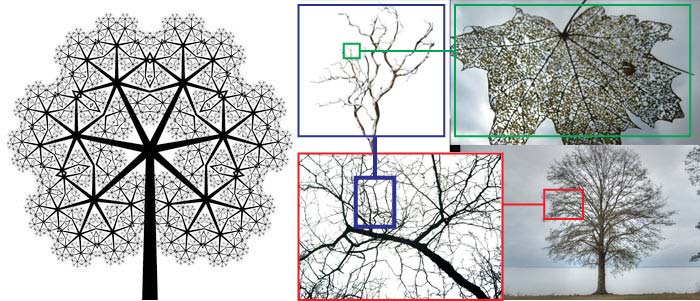
Left: Fractal pattern of a tree (tree of life), through its trunk, branches and twigs. At right: The Mandelbrot set is a popular example of a computer generated fractal.
I like to think that relationships or the bonding of people follow the same rules of physics as the relationships or bonding between atoms and cosmic bodies. That cosmic bodies, humans, and atoms all share a “fractal” (ie. microcosmic) relationship and thus share inherent similarities and adhere to similar physical laws.
Atomic and cosmic bonding, are of course governed and categorized by differences in energy potential. In humans we call this same potential energy attractive desire. We all have different polarities which dictate this attractive desire, and our level of polarization varies throughout our lives. Our relationships or human interactions become structured on the give and takes associated with our values/desires. It doesn’t take reading too many self help books to realize that its hard to categorize exactly what will make a good marriage or bonded relationship—because just like with atomic bonding, different people bond in radically different ways. As with cosmic bonds, there are a myriad of varieties of orbital types and likewise there are a handful of unique nuclear bonding strategies. There are likewise certain mixtures of these same type of fundamental attributes which can cause a lot of difficulties in relationships, and understanding our roles as well as the rules of physics and polarities which govern both atomic and human relationships can help individuals work through the difficulties of life.
Fractals. To really believe how science and the physics of the universe can apply to other aspects of human existence it helps to understand the principle of fractal cosmology. That is that our reality is holographic and is thus composed of remarkably similar units of differing scale. This idea of microcosm vs macrocosm is embedded into all religion and culture in types, symbols, shadows, natural allegory and comparisons with the natural world.
Charge or polarity. In reality all charge/polarity is relative. An atom becomes polarized in relation to itself when it has a different number of electrons than protons, or better put, when the charge of its energy field is different from the charge of its heart/core. This is called an ion. Another type of polarity is when neutral/stable atom is charged/polarized in relation to another atom. It is this polarity that forms the basis for inter-atom relationships, but more on that in a minute.
Inward/outward charge (ie protons/electrons) occurs when our outward life does not match our inward life or what’s in our hearts. This can occur at many different levels. For ALL those living in veiled earth, a polarity exists between our unveiled/higher-self (god/spirit) and our lower veiled conscious mind (ego/flesh). Further divisions can occur between our outward life (the parts of us we share with the world, or how people perceive us), and our inward life (what we really believe or how we see ourselves). Among troubled individuals even greater divisions can be created bringing about bi-polar disorder or schizophrenia where even our inward life has been divided into non-conjoining realities. The importance of this information is in the realization that these divisions exist in order to do WORK. The potential energy formed by polarization is how human progression or evolution occurs. Division creates a potential which is the source of all DESIRE, and desire is the motivating force behind all behavior. These potentials are what guide and control ALL our relationships.
In the same way that all molecules (relationships of two or more bonded atoms) are created & maintained by electric potentials in atoms, so too are our human relationships created and maintained by the desires or potentials created by divisions between our own inward and outward selves; essentially the differences between the desires of our hearts (intuition), the thoughts of our heads (beliefs) and the substance of our actions.
Bonding in atoms occurs primarily because of the octet rule. Atoms want to fill up their outer octet of electrons to obtain a stable ‘noble gas’ configuration. Thus just like people, atoms without this ‘complete’ energy configuration seek to bond in order to find wholeness. The atom/person feels something is missing and feels a desire to bond subconsciously. The ‘desire’ or likely-hood of an atom to bond has a lot to do with how close or far to the octet rule they are. This same polarization of valence electrons also largely dictates what types of bonds atoms can create or relationships atoms can have with other atoms. The same is true of people, for the same reasons. It is the relationship between our outer polarities or ‘desires’ which dictates who we are attracted to, and in what ways. There are various personality tests which attempt to aid us in understanding who we really are at any point, and to help us know who we may or may not currently be compatible with. (or what we need to change to become compatible) However, I believe all of these fall short in accurately categorizing the variability and uniqueness of all humans, and I believe that because of the holographic or fractal nature of our reality, categories based more closely on the microcosm of the periodic chart and nuclear bonding would far more accurately capture the full variability spectrum of human nature.
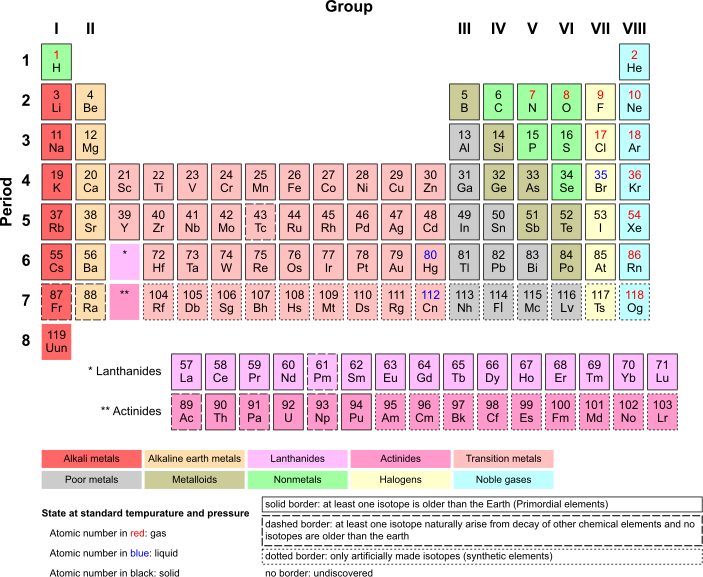
Periodic Table of the Elements
Before getting into the different types of chemical bonding, it may be helpful for the reader to reacquaint themselves with the periodic chart and how it is structured. Recall that apart from the metallics, atoms are placed in one of eight groups which correspond with the number of valence electrons. This is essentially the polarity of an atom relative to a noble gas. (The number eight is metaphysically important here, as our observable reality is structured like a diamond in a double tetrahedron configuration which tends to fractally divide into repeating sequences of seven.) So because of the octet rule, group ones like to bond with group sevens, group twos with group sixes and so on. There are literally millions of comparisons that could be made between the bonding characteristics of these different elements and those of people. Some elements bond easily, some only with difficulty. The nobles are ‘inert’ and completely balanced both within and without, it is these atoms which are used to buffer reactions. Like people some atoms have relative polarization’s of positive and others of negativity. We don’t call these atoms ‘good’ or ‘evil’, we simply observe their behavior and tendencies, and try to combine them in meaningful and useful ways. This is also how the noble therapist, historian or even holy-man judges; without cultural or religious labels, but instead with neutral or unpolarized wisdom.
Ionic Bonding relationships: occurs when the bond or relationship between atoms causes both atoms to polarize or become charged ions. In essence, in an ionic bonding situation, one atom is in dire ‘need’ of an electron and thus ‘steals’ the excess charge/electrons from another making both itself and its partner ionic or oppositely unbalanced/polarized. In these relationships one partner polarizes the other toward selfishness/unselfishness, and this potential difference creates the attraction which holds the relationship together. An example could be physical attraction. The beauty of one individual causes desire or charge in another. The desire/charge is created when one begins to believe they are not whole, complete and beautiful enough in and of themselves. This division of the divine “whole” unstabalizes the individual and creates a ‘need’ desire where they cannot feel whole and complete unless they possess the beauty of the other. When the beautiful one allows themselves to be ‘possessed’ by the one full of desire; a codependence is created and the beautiful one often gets to the point where they do not feel whole or complete unless they are desired or continually giving of themselves. This same situation plays out in any relationship where one side becomes ‘needy’ or negative/service-to-self and continually takes the excess charge of their partner; their partner continually allowing or enables them to do so because of excess positive polarization (not realizing their own actions are often the cause of the other’s neediness in the first place) Thus the ionic bond/relationship in codependence is created and sustained.
Covalent Bonding Relationships on the other hand, do not create ions or exist between ions. They exist between uncharged (non-ion) atoms with complementary charge/electron valence shells. In relationship terms both individuals are balanced and do not “need” the other. They are both internally balanced, however in relation to each-other or an inert gas atom they are polarized. The electrons or charge/desire in a covalent bond is shared in order to attain a balanced noble gas-like configuration. You might say this is a second stage relationship where individuals have learned to internally balance themselves without the aid of another to a point where bonding does not unbalance (ionize) them. Where polarization within the relationship is mutually shared and outward directed. And relationship which seeks to be outwardly serviceable must attain to this (metallic bond). However they are still not as balanced as a master (completely un-polarizable individual).
Inert Atoms/Noble Gases. A noble gas is the most stable and un-polarized on all the atoms on the periodic chart. They generally do not react with other atoms or molecules, and have a whole/complete outer valence shell. They are internally balanced (same number of protons & electrons) and externally balanced (full outer valence shell). They are often used as buffers to other reactions/relationships because they do not react (get pulled into the drama). Thus they can coexist with other molecules in substances, but do not bond to those molecules or substances. They are neither selfish nor selfless and yet they are both; neither masculine or feminine and yet both. They have both the ying and the yang in perfect balance, and thus can be all things to all people to aid in buffering the reactions of the more volatile individuals in life. However, as a disadvantage they can be loners, because they have no desire for relationship or drama. It takes great discipline for these individuals to become anything and in many cases they will not grow/progress unless they polarize and are thus motivated to become organic (forming an integral element of a whole; having systematic coordination of parts) which is the beginning and end of progression.
Ionic Bonding Relationships only form between ions of opposite internal polarity. That is, one must be polarized negative, the other positive, and through the give and take the net charge becomes neutral. The human relationship analog should be obvious. The defining attractive attributes of this relationship will be selfishness/selflessness in one attracting the opposite in the other. Because the give-and-take cancels out, the couple does not focus much on serving others either selflessly or selfishly. The net charge is zero. One need not suppose that in these types of relationships one is always the selfish one and vise-versa, although that may be generally the case, often the roles continually reverse given different situations; but it defines the general attractive principle. If the circumstances change, attraction ends and often so does the relationship.
Covalent bonds usually occur between atoms of near equal electronegativity or internal polarity. In relationship-terms this translates to a relationship between individuals of equal service orientation (service to self/selfish & service to others/selfless) who join together for a common cause
Electrons or charge in a covalent bond is often shared unequally, resulting in a molecule which is polarized. That is, unlike with ionic bonds, the molecule/relationship has a net charge of positivity or negativity. This means relationships with this type of bond, are often motivated with a desire to serve others or themselves as a team. These relationships give/take not only from/to each-other, but to/from others. That is, they are extroverts and give selfish or selfless service outwardly.
Finish this later. Talk a little more about the adept with quotes talking about the balancing process. The need for polarization to transition past step/density three, The role which unconditional love plays in the reversal of polarization and beginning of balancing… ect…
Reblogged Excerpt (from www.selfgrowth.com)
We need to look at human behavior and why we do the things that we do. All of us are made up of atoms. Atoms behave in a certain way and their behavior is a good model to use to understand human behavior.
There are 3 atomic bonds: Ionic bonds, Covalent bonds and Metallic bonds.
The Ionic bond is a ‘give and take’ relationship between two atoms. Electrons are transferred from one atom to the other.
The Covalent bond is a ‘sharing’ relationship. Instead of one atom losing an electron and the other gaining an electron, these atoms share one or more electrons. Sometimes the sharing is equal and other times the sharing is unequal.
The Metallic bond has the characteristics of both Ionic and Covalent bonds. It ‘shares’ and ‘gives and takes’.
An example of the Ionic bond can be found in the bonding of sodium and chloride. Sodium has an extra electron, and chloride only has 7 electrons in the outer orbit. When the extra electron of sodium is given to chloride, chloride then becomes stable and sodium gets rid of the extra electron.
The sodium after it gives up its electron, becomes positive because it now has more protons than electrons. Chloride now becomes negative because it has more electrons than protons. The sodium and chloride ions are now stable and the compound they create is called Salt.
This Ionic bond I am going to call ‘The Give-Take Relationship’. Each of these atoms has found another atom that can give it what it wants and needs. By giving, they also receive.
With a Covalent bonding, atoms are co-dependent. An example of this is with the hydrogen atom. A hydrogen atom only has 1 electron, and so is unable to give up an electron. When 2 hydrogen atoms unite, they share the 2 electrons and this makes them both stable.
This is the same as when two people who need the same thing come together. They rely upon each other to remain stable. This type of relationship is not strong because neither person can be stable without the other. These relationships have what you could call a ‘low boiling’ point and break easily. I am going to call this bond ‘The Sharing Relationship’.
In a Metallic bond there is both a sharing and a give and take of electrons. This is a very strong type of bond, and metals have a very high boiling point, so hence the name Metallic bond.
The outer electrons of metal are not bound closely. When 2 metal atoms come together the electrons can move freely amongst the nuclei within the crystal. They slip over each other, but stay bonded to each other by the attractive forces that exist. Within in this bond there is a sharing of the electrons and also giving and taking. This bond has a flexibility not found in any other bond.
An example of this bond is a ‘stable marriage’, where both people have the ability to not only share with each other, but they also give and take from the other person. They are both independent in this relationship, through the give and take process, and yet also create a dependence upon each other by sharing what each has.
The bond becomes stronger as time goes on because they have the flexibility to move about freely within the relationship, trusting each other not to bond (cheat) with anyone else. Neither person in this relationship wants to break the bond because not only are they filling the other persons void, but their voids are being fulfilled also.
I am going to call this metallic bond ‘The Fulfilling Relationship’.
Behavior becomes erratic or unstable when all of our voids are not met. When 2 atoms come together and aren’t able to fill each others voids, the created compound is known as a ‘Radical’. Just as with human relationships, we become radical or rebellious to others and ourselves when our needs aren’t met.
Why do some people eat food that isn’t healthy? Or smoke cigarettes, drink alcohol, do drugs or anything else that is unhealthy? It is simply that for many it is better to fill a void with something, than with nothing at all.
I think that we suffer in relationships because we are confused about what type of relationship we are in. You need to determine what your relationship is and then ask yourself a few questions. What do you give and what do you take from this relationship? What type of relationship does the other person think you have? If there is a problem with the relationship, can it be corrected? Or maybe you need to be separated from the relationship? This is true not just for a lover’s relationship, but it also holds true for relationships you have with friends, family, your children, co-workers, etc.


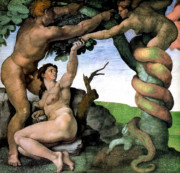
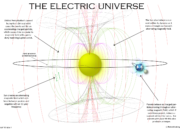
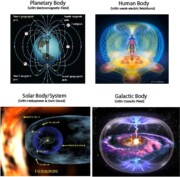
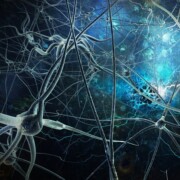
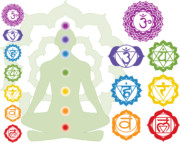



OMG, I was thinking exactly about this today in the office. Like literally, exactly this.
I mean, im sure im not the only one to ever think of human relationship in such way but seeing how someone else describe precisely what I was thinking about today feels awesome.